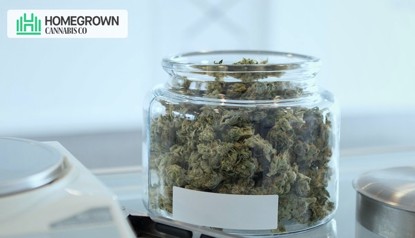Growing cannabis requires standardized conditions of growth and nutrients. The quality of a cannabis strain is designated depending on the quality, potency, and taste. If someone claims to have grown “top-shelf” cannabis, the piece has exquisite flavor, significant potency and provides the best experience.
As the bud of the cannabis plant is primarily used for preparing the final mixture, a grower needs to produce healthy and plump buds with the most optimum concentration of THC and CBDs.
Let us know some information about the ways to ensure optimum bud growth and quality.
The Factors To Keep In Mind
The users of cannabis always look for buds that will give the best experience while smoking; it can be the high, the calming effect, or the euphoria. Cannabis growing is not rocket science, but to grow the product that everyone remembers will need some extra attention and meticulous care. The factors that govern the growing of top-quality cannabis are discussed in brief details below:
- Start From A Genetic Level
You can grow several types and strain of cannabis within the same environment, but the quality would be different. The main reason is the underlying genetics. Seasoned growers agree that top-shelf buds are difficult to achieve from mid-grade seeds, clones, or the dreaded bag seeds.
Marijuana seeds bought from dispensaries have dubious sources, meaning they might not be the strain they are claimed to be. In that case, the flavor of the grown bud can be airy and without any potency. Therefore, one of the most effective ways to ensure the proper genetics of the strain is to buy the seeds from a certified seed bank like https://homegrowncannabisco.com/.
Many of these seed banks have websites and provide delivery to their clients. You would have a greater chance of getting high-quality buds with the seeds from a seed bank than from clones or bag seeds. Also, do not just but from the list provided; search, research, and determine the exact strain you are thinking of growing. Excellent and authentic seeds cost more, but the product will justify the costs.
- Arrange For A Lot Of Light
The cannabis plants require a lot of light but at optimum levels. Even after using seeds with verifiable genetics and source of the highest quality, inadequate lighting can give rise to reduced harvest, effectiveness, and suppleness of the buds.
For indoor growing, high-powered lights like CFL, LEC, or LED lights can produce the most enormous and most dense buds.
In some cases, large plants can be grown with the help of small CFLs or T5s, but it is better to use a bright light source to ensure the growth of buds with the best density, potency, and yields.
- Provide The Appropriate Nutrients
You can supplement the cannabis plants with specific chemicals along with base nutrients. However, the base nutrients have to be adequately added before going for the particular nutrients. The required nutrients in the flowering stages are listed below:
- Low Nitrogen
It would be best if you gave your cannabis plant a relatively low nitrogen level, more so in the second half of the flowering stage after the plant has completed its vegetative growth and the buds are starting to flatten up.
The plants use nitrogen mainly for vegetative growth than for bud-making. In reality, excess N during the ripening stage inhibits bud production and reduces the products’ yield.
- Comparatively More Phosphorus
You should add more phosphorus to the soil during the budding of cannabis, as it is crucial for flower production. Supplementing the plant-soil with P helps in increasing the number of flowers and bud yield.
- An Optimum Amount Of Potassium
Potassium with phosphorus is an ideal combination for increasing bud growth, bud size, and density of each flower. Therefore, the grower should provide the appropriate amount of potassium in the soil to ensure top quality bud yield and harvest.
Experienced growers suggest keeping the added nutrient level low during the second half of the flowering stage. It is observed that low nutrient addition produces great tasting buds, whereas adding nutrients more is associated with a chemical-flavored final product.
In addition, the source of the nutrients plays an important role. Utilizing organic fertilizers give rise to buds with greater potency and quality, while chemical fertilizers produce more numbers and bigger sizes.
Adding Supplements To The Soil
Cannabis growers also add different supplements during the flowering stage to ensure the improvement of the bud quality. The accessories in the market are available in different flavors, and they serve other functions for bud growth, as discussed below:
- Sugar or carbohydrates
Growers add sugars or carbohydrate to improve the taste/smell of the finished product and also to increase the bulk.
The intrinsic sugar, terpene, and ester content of many cannabis strain give their buds subtle and unique flavors like grape, citrus, berry, and raw (a generic sweet smell).
- Bloom enhancers
As the name suggests, these supplements help in the blooming of cannabis buds. They are essentially a complex of non-nutrient ingredients that help the plants grow better or more efficiently. The ingredients improve the growth processes or provide the cannabis with external amino acids and humic acids to increase the availability of the required product.
- PK Boosters & “Shooting Powders”
The main constituents of this type of supplements are potassium and phosphorus, affecting the flowering of the cannabis plant. They also contain a tiny amount of sulfur and must be used very little as they are potent.
You should use the supplements of the same company whose base nutrients you are using, as they minimize the chances of any adverse interaction between the two external growth boosters.
- Increasing terpene content for better taste and smell
Like the household spices and many flowers, the smell and taste of cannabis buds are produced by phytochemicals known as terpenes or terpenoids. Different combinations of these phytochemicals give rise to the diverse tastes of cannabis buds.
Experienced growers warn that although mixing and matching terpene sources can produce great-tasting and smelling cannabis, there is also an equal chance of mistakes that ruin the buds’ taste and smell.
- The optimum temperature
Experienced cultivators of cannabis recommend the temperature to be set around 180C-260C (about 650F-800F) during the day and 20°C-24°C (680 F-75°F) in the night for most strains in the flowering stage unless CO2 is used, which works best around 26°C-32°C (800F-90°F).
However, it is better to bring the temperatures back to 180C-260C at least two weeks before harvesting. A lower temperature than this can induce bud rot and ultimately kill the plants.
Experts agree that strains that develop pigmentation will do so only if the nighttime temperature remains a few notches lower than the daytime temperature. For indoor plants, the relative humidity is also important and needs to be maintained at 40%-50% during the flowering stage and about 25% for the last 2-3 weeks.
Post-Harvesting Procedures
In addition to the factors during growth, bud quality depends on the curing process after being harvested from the cannabis trees. Curing the buds for usually 2-3 weeks intensify the flavor, looks, density, and potency.
You can place the harvested buds in airtight mason jars during this curing stage and carefully protect them against mold contamination to ensure a final production of potent and best-quality buds.

